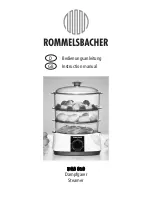
Wireless Charging Sonic Electric Toothbrushes
WAS-1972EN V1.00
2 / 17
December 27, 2021
Solution Features
1. Few external components: includes an integrated demodulation circuit, an integrated high
voltage NMOS circuit and a linear charging management circuit.
Charging base master MCU: includes an integrated demodulation circuit and a high voltage
NMOS circuit.
The BP45F0044 provides an integrated high voltage NMOS circuit to control LC resonance.
An internal demodulation circuit together with an external current-sampling resistor can
implement wireless signal demodulation. The I/O outputs have a 4-level programmable current
function which can directly drive LEDs without the need for external components.
Toothbrush body master MCU: includes an integrated charging management circuit and an H-
bridge drive circuit.
The toothbrush body master MCU, the BP45F1330 includes an integrated linear charging
circuit which is used for lithium battery charging management. The device also includes an
integrated H-bridge drive circuit which can directly drive DC motors for backward or forward
control. The I/O outputs have a 4-level programmable current function which can directly
drive LEDs without the need for current limiting resistors.
2. Low power consumption: achieves power saving and automatic standby functions using ID
identification.
Charging base: achieves power saving function using ID identification.
An internal demodulation circuit together with an external current-sampling resistor can
implement wireless signal demodulation. The ID returned by the toothbrush body is used to
determine whether the charging base has been powered on. If the returned ID is incorrect, the
charging base will stop transmitting power to reduce the average system power consumption.
Toothbrush body: The toothbrush will automatically enter the standby mode if there is no
operation.
When entering operating mode 0, the toothbrush body will automatically enter the sleep mode
and the system will stop running. The average standby current is about 1µA to achieve to
reduce power consumption.
Operating Principles
A wireless charging function is based on the principle of transmitting power from a charging seat
to a toothbrush body in the way of a fluctuating magnetic field, allowing the toothbrush body to
sense an AC current. After the AC is sensed by the toothbrush body, it passes through a rectifier
circuit, after which the DC current can be used by the MCU and for lithium battery charging.
Communication also plays an important role in the wireless charging process. When a charging
base has successfully communicated with a toothbrush, the charging base will then transmit power.
When the power transmission function is not being used, the product enters the standby mode to
reduce power consumption. According to different toothbrush body setup operations, the sonic
motor can be controlled to swing from side to side with a corresponding amplitude and frequency
to achieve different cleaning effects.



































